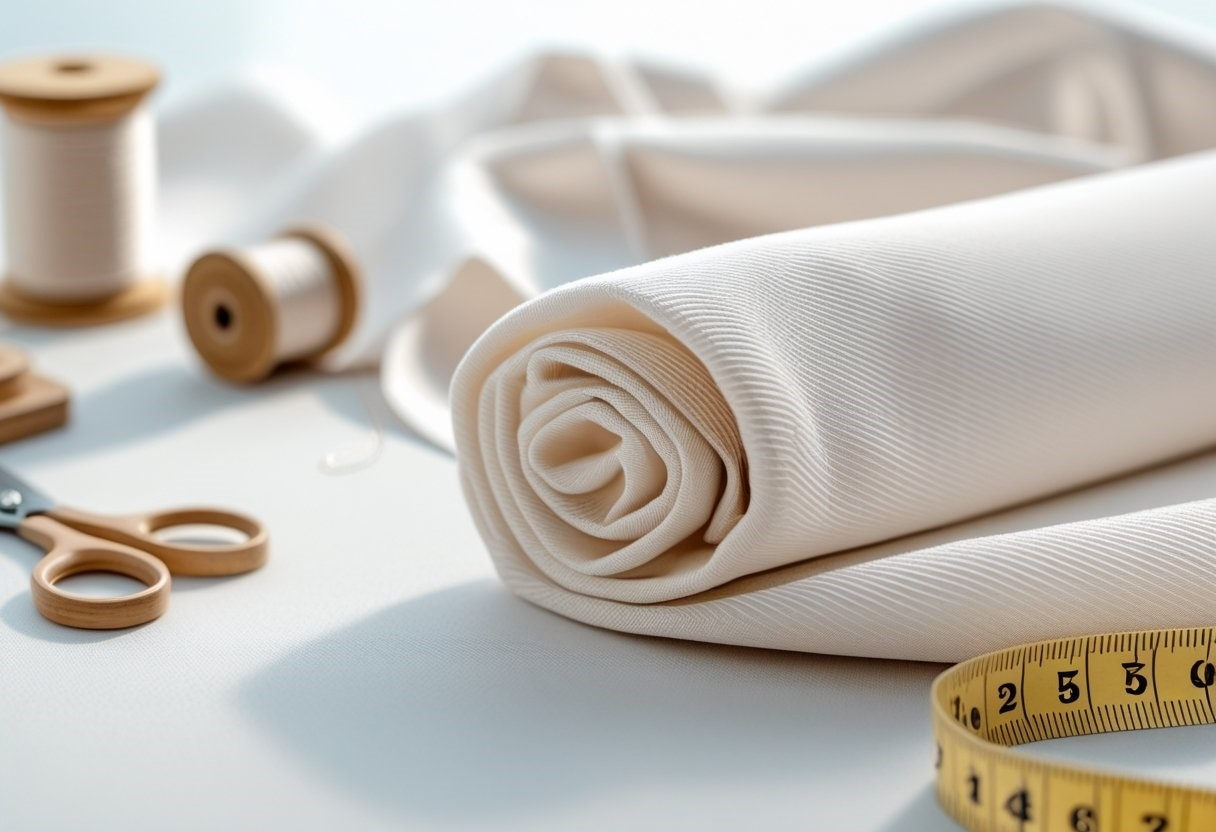
Fabric impacts how clothing performs day to day. Whether browsing casual basics or refined pieces, poplin shows up more often than expected. It offers structure without stiffness, comfort without compromise, and a crisp look that holds up. It’s especially popular in warm-weather staples and versatile pieces like party dresses, where breathability and polish matter.
This article explains exactly what poplin is, where it comes from, and why it’s used in so many garments. Understanding the fabric can help you make smarter clothing choices for everyday wear, travel, or special occasions.
Poplin is a plain-weave fabric known for its smooth surface and tightly packed threads. It features a subtle horizontal rib created by weaving a finer warp thread with a thicker weft. The result is a lightweight yet durable material that drapes well and resists clinging.
Originally made with silk and wool, poplin today is most commonly produced using cotton or cotton-polyester blends. Some variations include a small amount of spandex for added flexibility, making the fabric even more comfortable for movement-heavy pieces.
Because of its weave and fiber structure, poplin maintains a crisp, clean finish while remaining soft and breathable. These qualities make it ideal for both tailored and casual styles.
Poplin’s origins date back to 15th-century France, where it was first woven in Avignon. At the time, the fabric combined silk and wool, making it both luxurious and warm, often used for church garments and ceremonial attire.
As fabric production evolved, poplin made its way into mainstream fashion and eventually into everyday use. By the 20th century, cotton poplin had become a staple in military uniforms, appreciated for its durability and comfort. That same practicality helped it transition into civilian wardrobes.
Today, poplin is a go-to choice for shirts, dresses, and lightweight layering pieces, thanks to its breathable texture and clean appearance.
Poplin stands out from other everyday fabrics due to its structure and finish. Compared to cotton broadcloth, which is similarly plain-woven, poplin is generally softer and more breathable. It’s thinner than twill, which has a diagonal weave and a heavier, more textured feel, making poplin better for warm-weather wear.
Unlike linen, which wrinkles easily and has a looser weave, poplin holds its shape and resists creasing, giving it a more polished appearance straight out of the wash. These qualities make poplin a solid choice when looking for something crisp yet comfortable, without the upkeep of more delicate fabrics.
Poplin is known for its lightweight, breathable weave and wrinkle resistance, making it a favorite for daily wear and travel. The tight weave offers structure without feeling stiff, allowing garments to maintain a tailored look while staying comfortable.
It’s also easy to care for, often requiring just a quick wash and minimal ironing. The matte finish gives it a clean, modern aesthetic that works well in minimalist and classic wardrobes. Also, poplin tends to be less prone to pilling or fading, so pieces made from it tend to last longer with regular use.
These characteristics make poplin especially popular for items that are worn often or need to hold up throughout long days, such as office wear, uniforms, and lightweight outerwear.
Poplin is one of the most versatile fabrics in modern fashion. It’s commonly found in button-down shirts, casual and formal dresses, skirts, tailored pants, and lightweight jackets. Thanks to its breathable and wrinkle-resistant nature, it’s often used for clothing that transitions between work and social settings.
Beyond personal fashion, poplin is also used in uniforms due to its durability and neat appearance. In home textiles, it may appear in pillowcases or lightweight curtains, where a clean, structured look is preferred.
Poplin blends' ability to hold their shape while staying cool and comfortable makes them especially useful in warmer climates or during transitional seasons. They are also used in clothing designed for frequent travel or long wear, where low-maintenance fabrics are a priority.
Poplin is best suited for spring and summer, thanks to its lightweight and breathable weave. It’s an excellent option for layering in mild temperatures and can hold its own in casual and more polished settings.
However, poplin isn’t the warmest material. It typically needs to be layered with heavier fabrics or worn as an inner layer for colder weather. In outdoor settings during winter, it won’t offer much insulation on its own.
It also may not be the ideal choice for highly formal evening events, where more structured or luxurious fabrics like satin or velvet are expected. That said, for most daytime events, office wear, and travel days, poplin remains a comfortable, easy-to-style go-to.
Poplin delivers comfort, structure, and easy care in one fabric. It’s a reliable choice for everyday wear, travel, and warm-weather pieces that look polished without the effort.